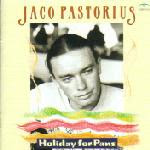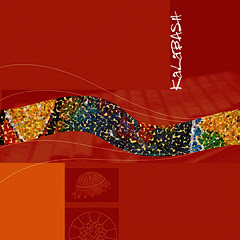I was recently re-animated about the possibilities of programming 24 hours of steelpan jazz and its variants for online radio, when I had to do a little research into the output of this sub-genre of our Caribbean jazz fusion experiment. Some hard realities; we had a proliferation of CDs during the1990s, both in Trinidad and Tobago and abroad, mainly North America. A smattering of offerings out of the UK and Europe did not hold much sway as we entered the 21st century. As a programming niche, there is a thin line between repitition and redundancy.
There is a sort of renaissance in music recording now from the US, by non-Trinidadians as well as diasporic citizens, but the quality varies with level of music academic qualifications. Two names stick out, Phil Hawkins and Gary Gibson, both offering two and four CDs respectively in the 2000s, leaning to what Andy Narell, among others, has termed "progressive steelpan jazz": jazz-based, harmonically intricate music. To quote a review for one of Gibson's CDs: "Speaking a language of harmonic depth not previously explored within the steelpan community in recorded music, Gibson's compositions provide an excellent springboard for improvisations." Both these West-coast musicians attempt to be innovators of music for steelpan. On the east coast of the US, ex-pats Liam Teague and Leon Foster Thomas are creating variety, Victor Provost recently premiered with bebop stylings, while JAOTG alumnus Jonathan Scales released his third CD of musically complex and outside the box compositions. One critic noted, "the music on Jonathan Scales' [three CDs] defies the conventional parameters of jazz or even "pan-jazz" and pushes composition to unprecedented levels of complexity and sophistication."
Local steelpan recordings seem to revolve around ensemble performance by a whole band, with few offerings by our greats: Boogsie, Professor, Ray. Robbie Greenidge, with his collaborations with Michael Utley of Jimmy Buffett's Coral Reefers Band, has about over a half-dozen CDs, now and then veering towards his boss' carefree tropical blend devoid of the native rhythms that inform Caribbean jazz. I look and listen with keen interest at young Kyle Noel's upcoming offerings. This Trinidad southerner, far from the madding crowd has interesting musical and sonic ideas, and it would be an excellent fillip for the inventors of the PHI to get that instrument into his hands.
Hoping and believing that quantity and quality are what drive a music industry, I look, and wait with bated breath for the day when we get our act together here in the Caribbean, to make that statement that we made years ago when Caribbean people challenged the idea that there was music other than rock 'n' roll that was chart-worthy in the US. Belafonte was a catalyst then, but not a sustainer. It is said that Andy Narell is the equivalent catalyst for the steelpan. Only excellent output will sustain. [Listen to the exfm stream of some collected music here.]























